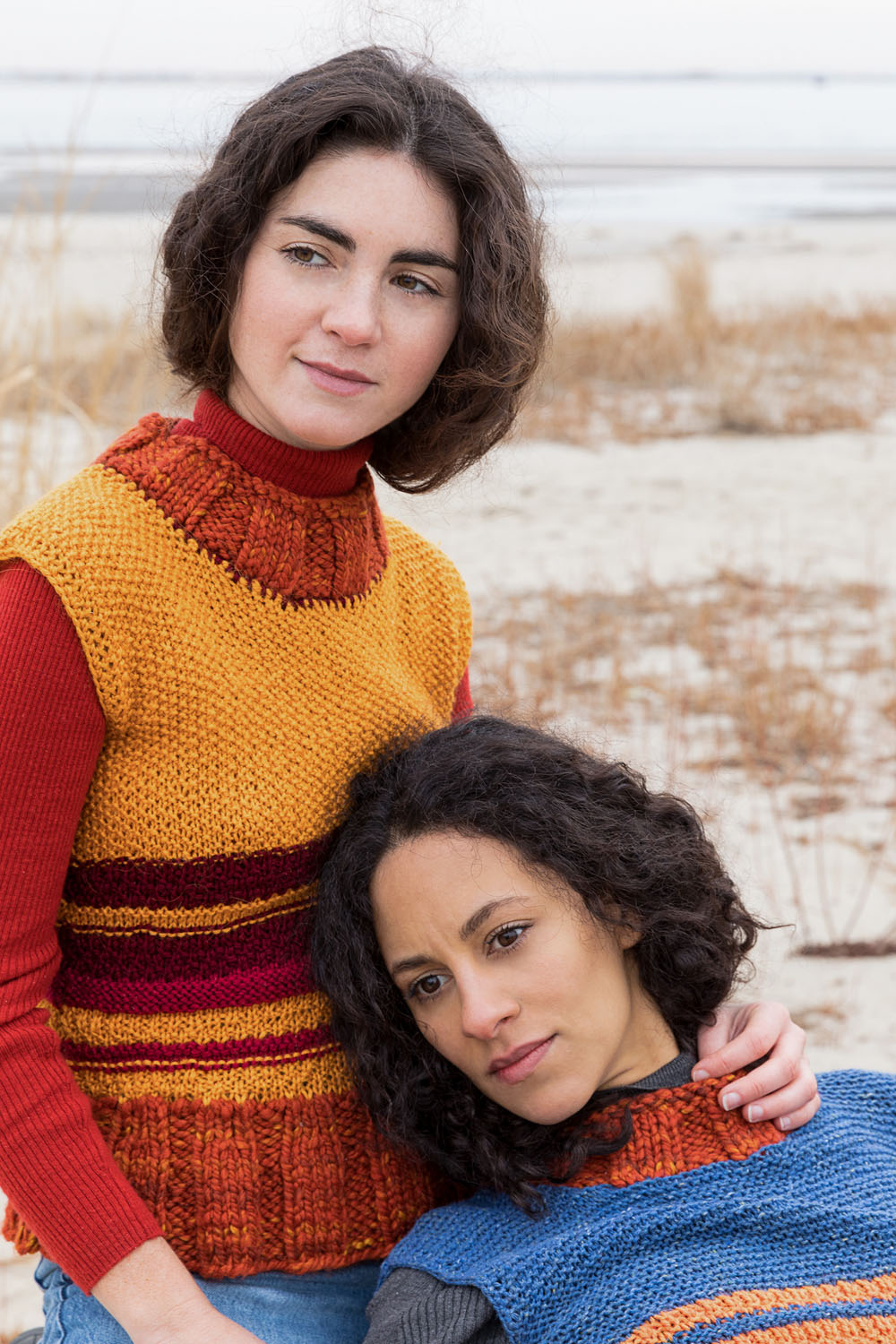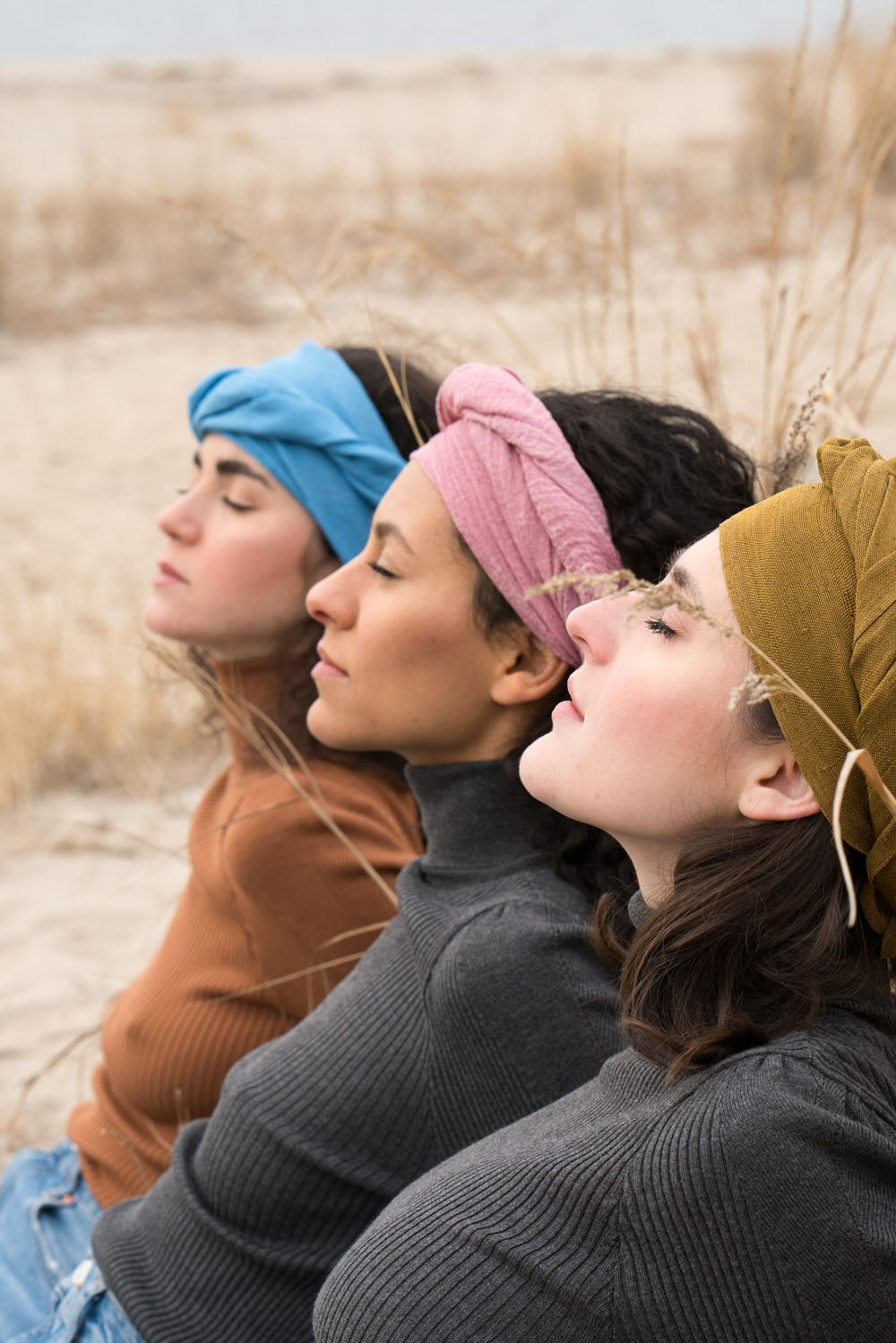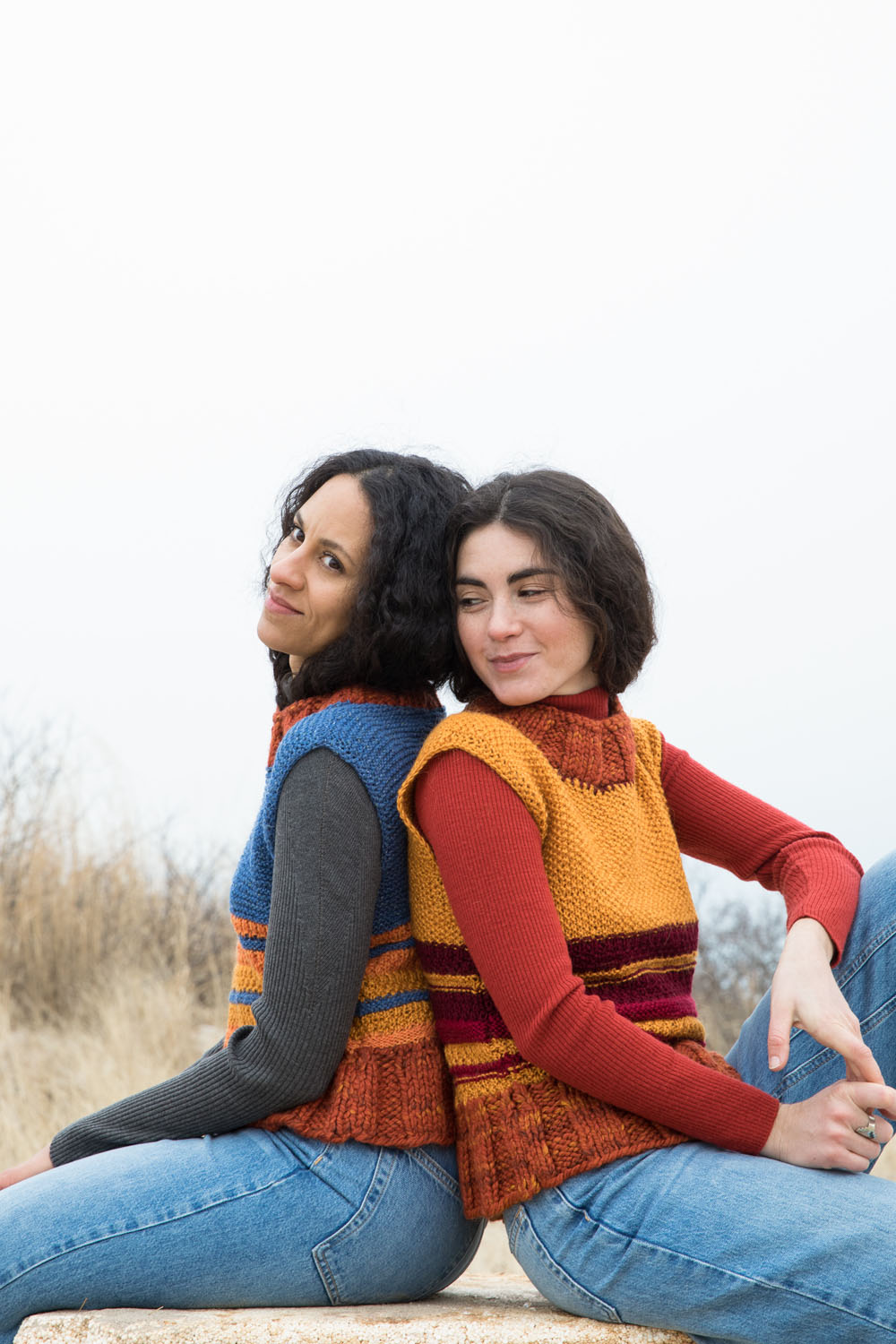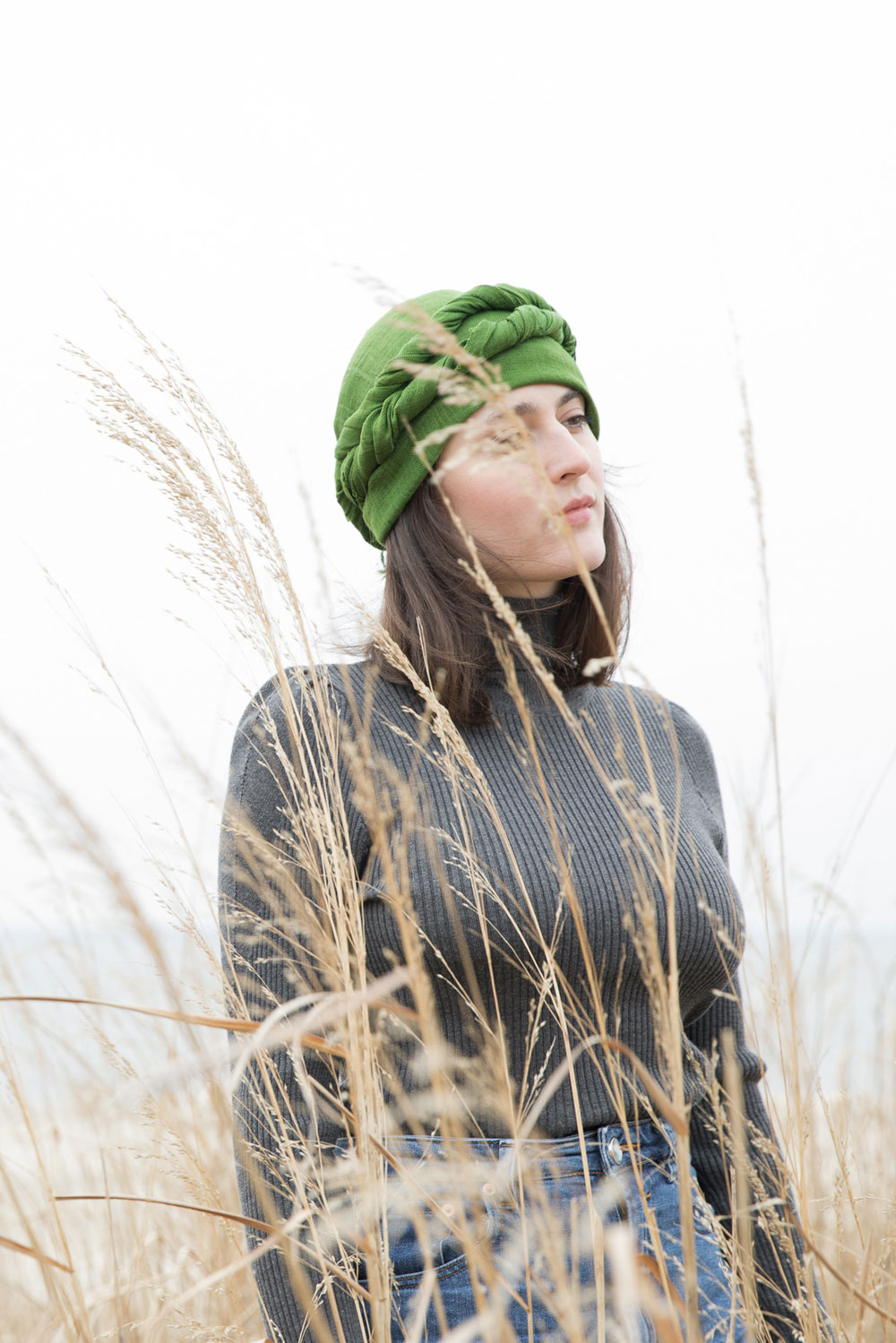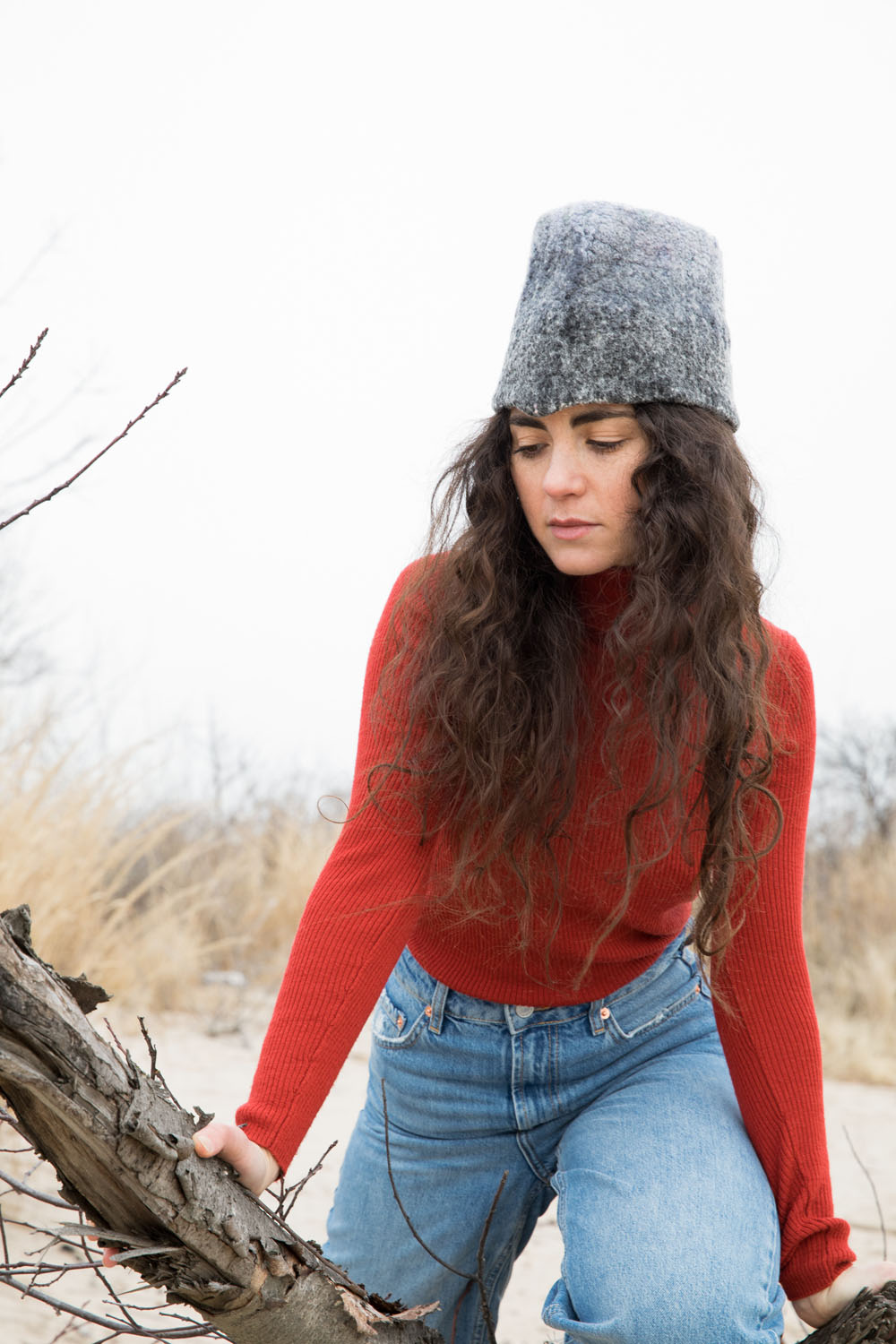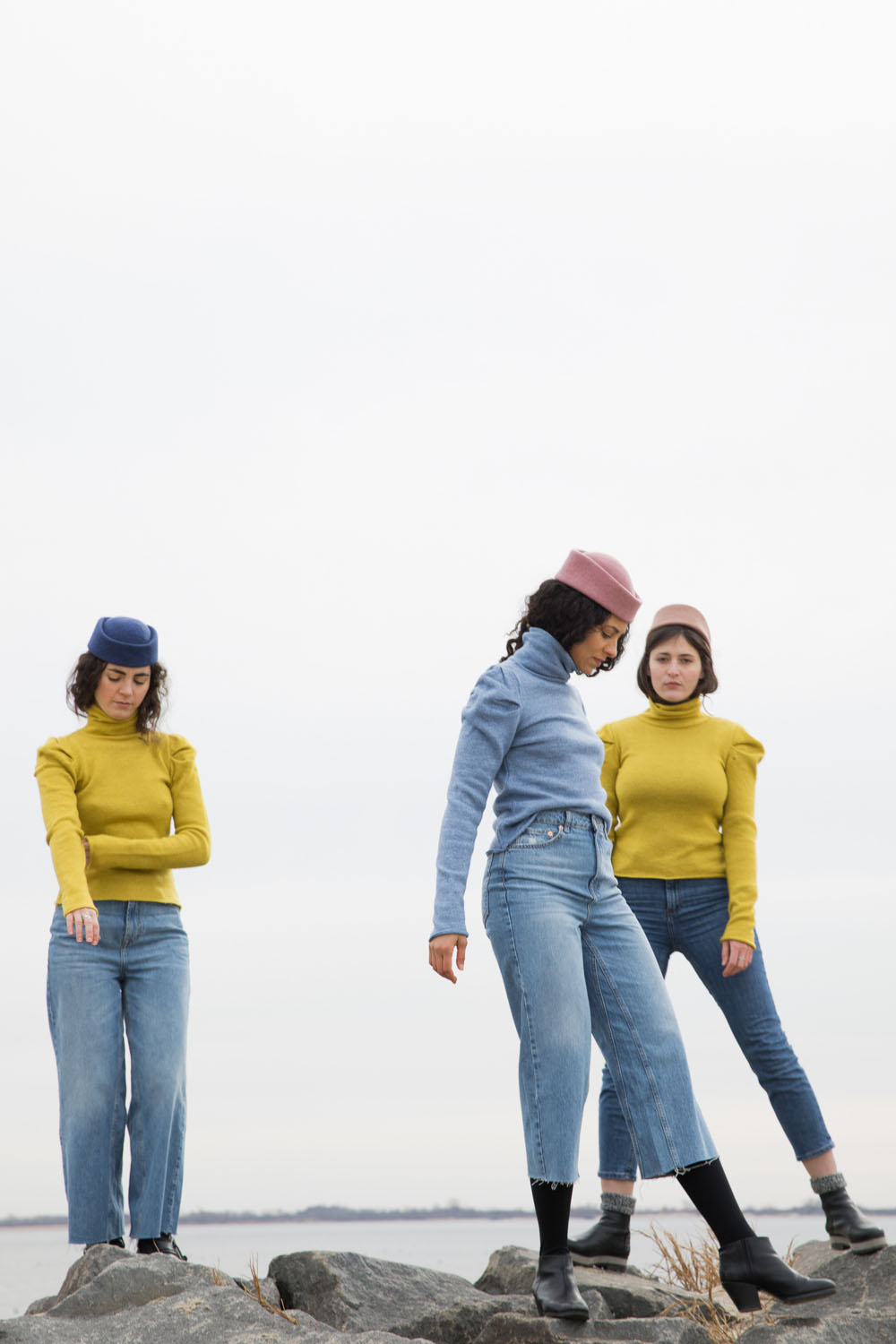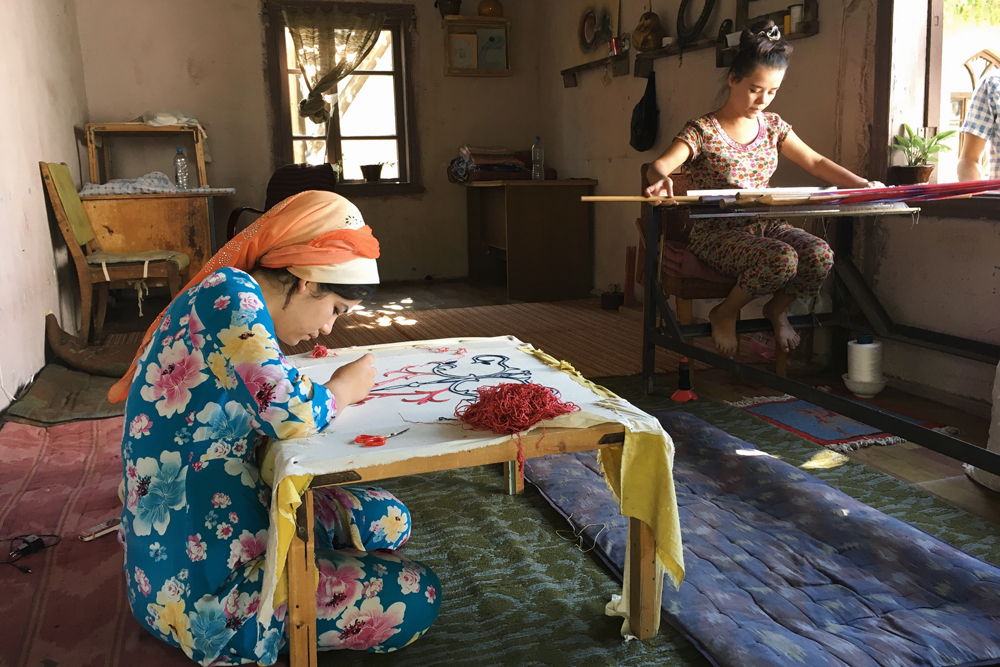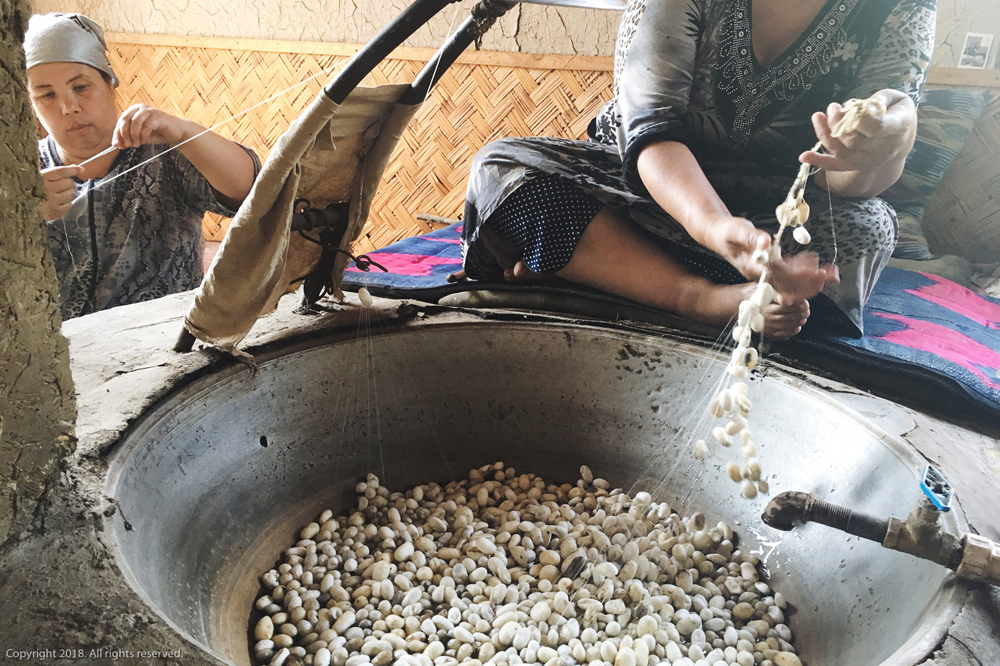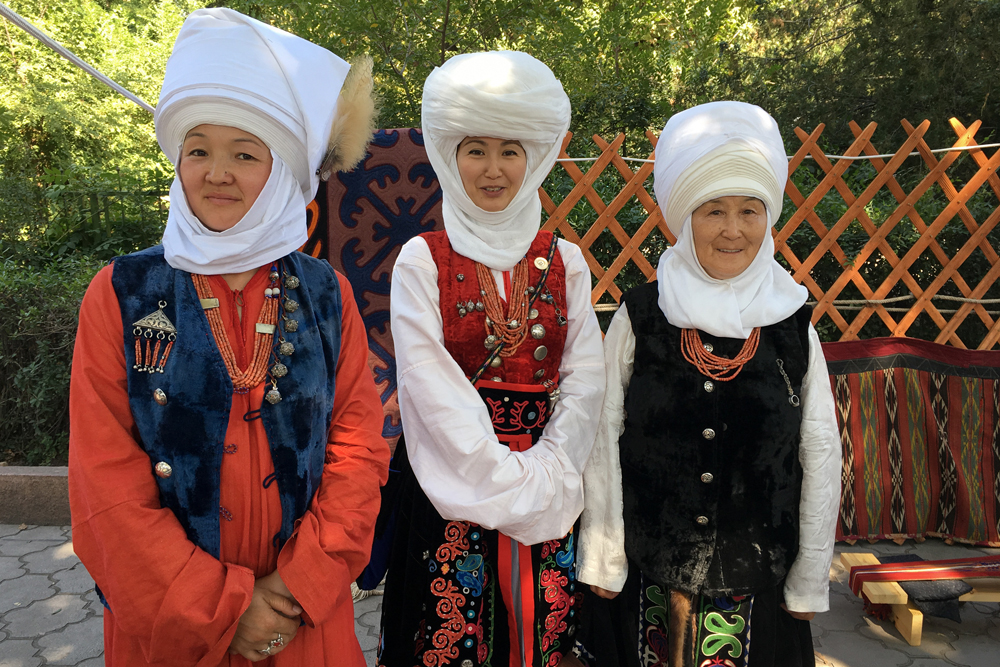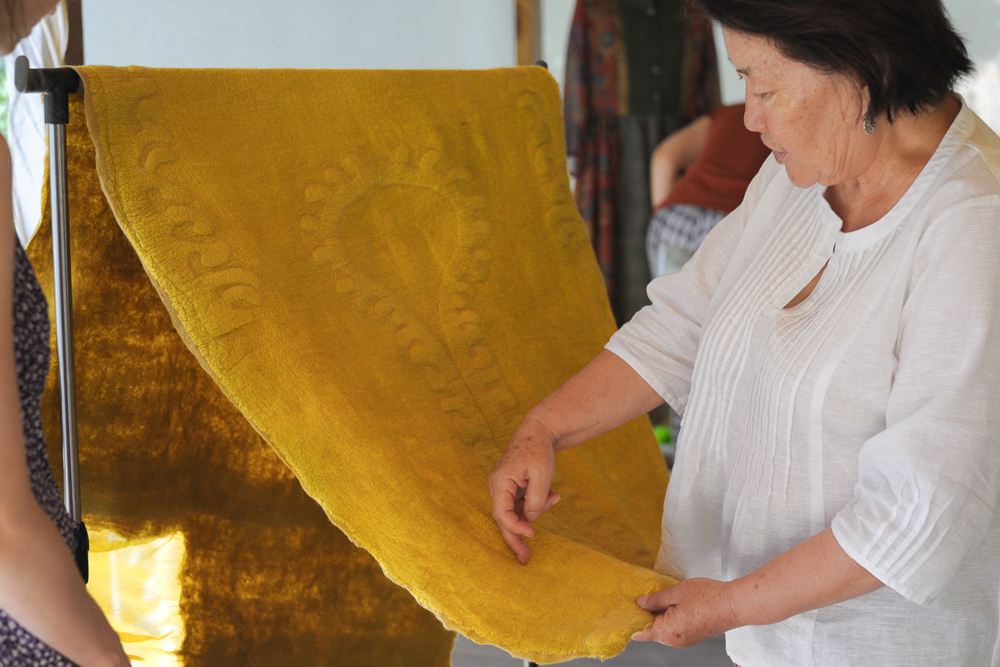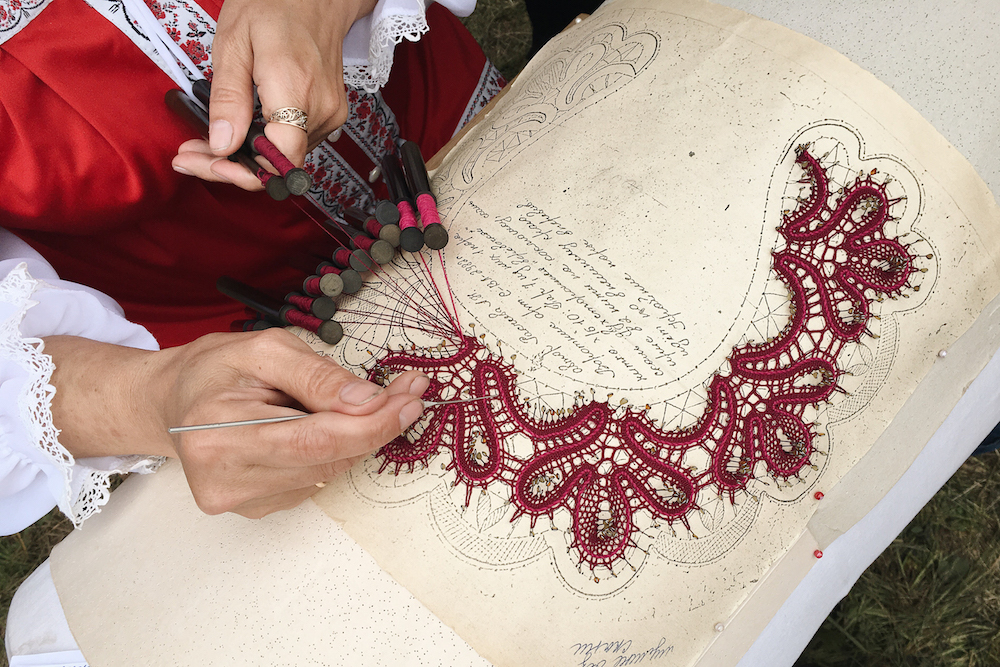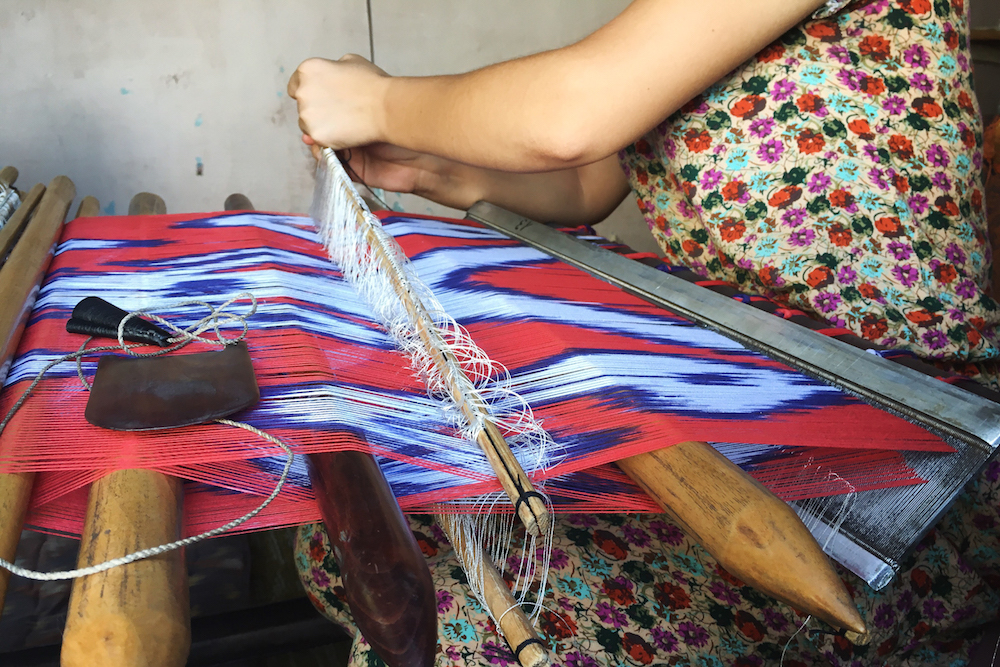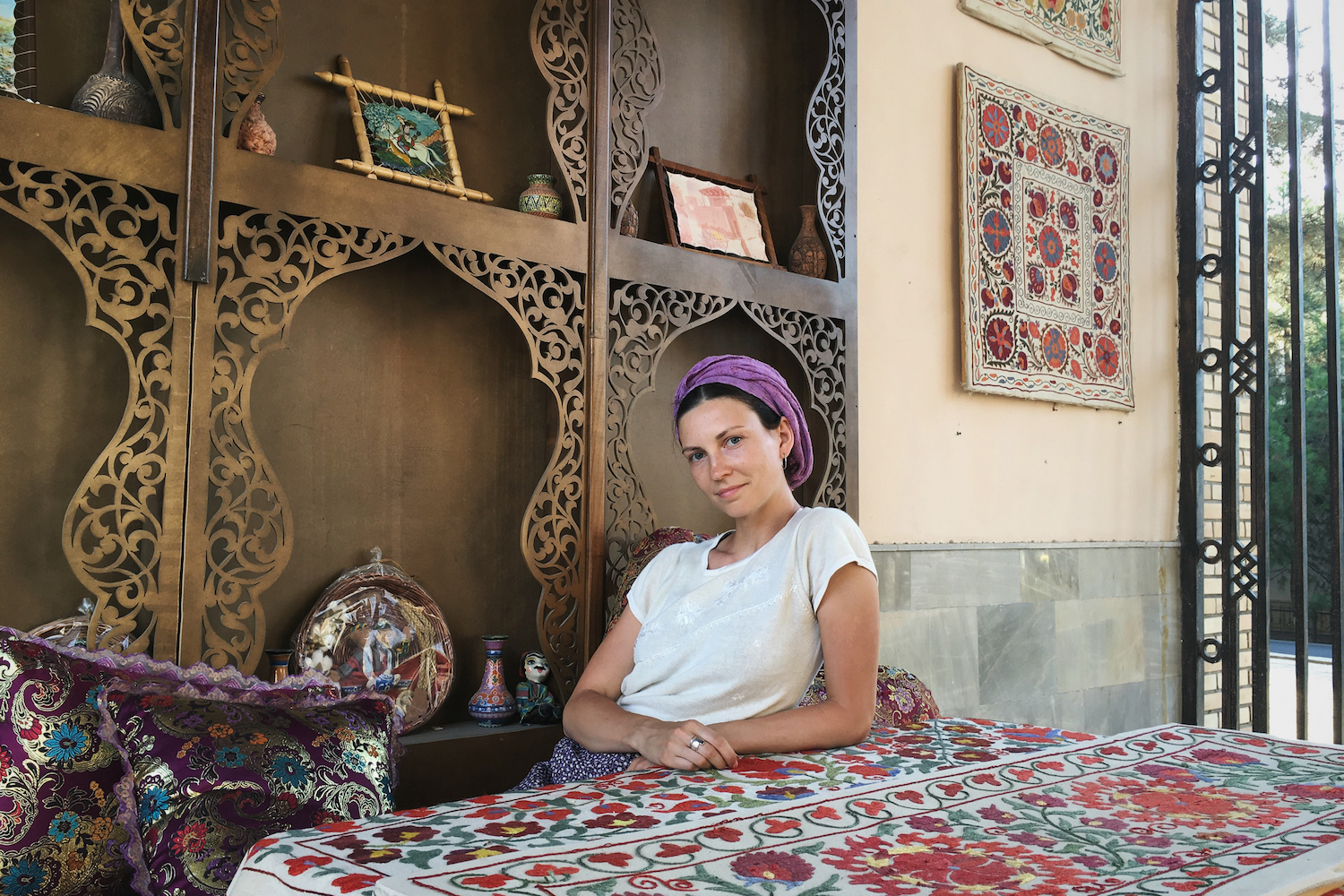Who are you wearing?: from Russia to Central Asia, this label is putting the artisan first
As post-Soviet fashion exploded onto the runways, Sasha Bromberg wanted to make a difference. She founded dotta project, an ethical fashion initiative, to preserve textile handicraft traditions in Russia, the Caucasus and Central Asia
Is it possible to borrow traditions from other cultures, and to preserve them without stripping the original context? How can fashion brands have a positive effect on the people who manufacture their clothes overseas? After decades of an industry which paid little attention to the ethics of clothes production, these urgent questions now loom large over the fashion business today. But while for bigger fashion houses, accusations of cultural apropriation have become as commonplace in recent years as the appearance of trainers on the catwalk, it’s the smaller labels that are rising up to make a difference.
Womenswear label, dotta project, was founded in New York but has its roots in Russia and Central Asia. Its founder, Sasha Bromberg, was born in the southern Urals and relocated to the US in 2010 to study art after finishing law school in Russia. “Printmaking was the main focus of my studies,” she says. “It sparked an interest in applied arts and handicraft. I tried my hand at knitting, natural dyeing, weaving, eco print and silkscreen.” What had originally interested her in traditional textiles was the precedence for functionality. No matter what culture, whether a folk embroidered apron or patchwork blanket, the final product was made to reflect the needs and lifestyles of the people they were made for. “For instance, an elechek, a traditional headdress worn by women in Kyrgyzstan, is wound from 11 meters of fabric,” Bromberg tells me. “This comes in useful to swaddle newborns, take care of the ill or cover those who have passed away.”
Bromberg discovered soon after graduating that while there was a market for products from Mexico, South America, Africa and India in the US, there is an absence of sustainable fashion initiatives from the Balkans, the Caucasus and Russia. “I started visiting different panels, exhibitions and pop-up shops in New York to learn more about handcraft market. There are tons of events dedicated to sustainable fashion (organised by FIT college, Ecosession, Nest and many more), where I got to meet brands like Proud Mary, LRNCE, Five|Six, virtue + vice and others working with artisans mostly from Africa, India and South America. American startups tend to focus on Hispanic regions. Yet, there is very little cross-cultural activity happening with post-Soviet countries.”
At the same time, there has been a growing interest in Russian, Georgian and Ukrainian designers. For Bromberg, it was less about jumping on the so called “post-Soviet” bandwagon, rather using the traction as an opportunity to bring attention to the artisans in this region. She references Jahnkoy, another New York brand: not only for the fact it was created by a fellow Russian-born designer, Maria Kazakova, but for celebrating multicultural crafts. Bromberg wanted to go one step further and involve artisans in every step of the design process.
When so much of “sustainable fashion” brings up images of plain, loose-fitted linen tops, dotta’s colour pallete is a feast for the eyes
Like Kazakova, Bromberg is influenced by her heritage, an appreciation that she says came from moving abroad: “Living in New York made me look at Russia and the post-Soviet world at large with new eyes. Visually, there’s so much character, so much weird and spontaneous beauty in unlikely places. And this is one thing that definitely inspires dotta — imperfection.” The Urals, she often hears described as “grey” and “industrial”. “I find it special,” she says. “Marked by integrity, depth and astounding natural beauty”.
It was on her visit to her family in Chelyabinsk where she met Tatiana and Lora, who became her first collaborators and, in many ways, the real inspiration behind dotta project. “Tatiana is a professional knitter. Because of her wheelchair, she works from home. I learned that for decades Tatiana and her friend Lora had worked for a local store, basically creating all inventory by hand. When the business slowed down, they formed a knitting enterprise,” she recalls. The first product was a hand-knitted peplum-shaped vest called the Volga, for its bright blue colour. “Everything was very informal. First we did a vest: I explained the design and she added technical recommendations. Over the summer we completed a series of handknits. That was dotta’s first range. The website launched in December 2017.”
“Playful aesthetics with serious ethics” is how Bromberg describes the designs. This couldn’t be more apt. The range is remarkably unique, not least because no vest is made the same. The original vest design is now available in a variety of colours from pastel pink to bright citrus hues, deliberately made to contrast with the kind of neutral fashion found in New York as well as other big cities. When “sustainable fashion” brings up images of plain loose-fitted linen tops, dotta’s colour pallete is a feast for the eyes.
Whatsmore, these intricate made-to-order garments are woven with a myriad of references: the Mosvka vest was inspired by the colours of the 1980s Olympics; the Ala-Kul felted vest, modelled after a traditional Kyrgyz waistcoat, takes it name from the country’s famous alpine lake.
As the online shop has grown, so has the number of artisans Bromberg works with. When she started, Bromberg says she relied on family and friends for leads. Wanting to grow her circle of artisans beyond Russia, she travelled to Bishkek where she met Inis, who had decades of sewing, teaching, community work behind her. “She showed me samples of felting, embroidery, and her sewing designs. I took my time to think what styles would work for dotta. Then we narrowed the designs down under the walnut tree in their garden.”
This kind of business negotiation would be alien in America but Bromberg says she prefers it — meeting the artisans is her favourite part of the process. “Our first meeting took an entire day! It was very personal, I got to meet the whole family, who prepared pilaf, manti, apricot pie,” the founder recalls. The photos in this article and on the project’s Instagram account are from some of the incredible bazaars, valleys and mountain ranges she has passed through on her visits to meet with artisans and look for fabrics.
The label’s first collection spans a world of craft traditions by way of pastel-coloured pillbox hats, silk scarves that can be worn in multiple ways, and easy-to-layer vests and jackets with peculiar details. It is the collaborative effort of six different collectives: two in Russia, three in Kyrgyzstan, one in Uzbekistan and a few individual makers. The online shop specifies who each garment is made by and a little about their life.
“The artisan groups range in size and scale, though they are commonly established by women, families or regional associations. For instance, one felting studio in Russia is run by two sisters who cover all aspects of production. Anna and Natasha both had professional careers in construction, then quit and opened the studio a few years ago — pretty brave! One textile mill in Uzbekistan, on the other hand, has 40 years of history and about 400 masters employed at the moment. They work in restoration of hand weaving and Uzbek fabrics like adras, ikat, bekasam.”
Besides differences in culture and crafts, working across multiple countries has taught her just how much industry practice varies in the post-Soviet world. “In Kyrgyzstan the artisan sector gets nonprofit and state support. The government made some really progressive efforts and connections in this regard — the Japanese (JICA), Swiss (HELVETAS), American (ATA) programmes to name a few. Artisinal craft is valued and is expensive.” Uzbekistan by contrast is a lot more closed off to international support, despite being one of the largest producers of cotton and silk. “Russian artisans are seeking to develop businesses through social media and Russian-language platforms,” she reveals. Though what stuck her most was the creative energy in these regions: “I happened to attend a regional craft festival in Russia. What was really impressive is the number of participants actively involved in making! Most of them were from Bashkir villages or industrial towns, yet opted to follow creative yearning against all odds.”
Though shaping the collection in three different countries has been arduous at times, the biggest hurdle has been getting attention back in the US. “There is so much happening in New York that smaller players get lost in the fashion scene. One of the problems is scale. Because of the nature of the product, dotta products come in limited editions when stores want scalable orders.”
Bromberg sets her sights on producing two collections a year. Yet dotta is more than just a fashion label, set up as a platform to preserve traditional craft, as well as to connect artisans with other brands. “Preservation is at the heart of dotta. Fashion is just one tool for this. Still, I believe it is a very powerful one, one that can bring about action. Once there is more funding, I would like to explore the possibility of video work and fiber art exhibitions.”
In the last week the hashtag #whomademyclothes has reappeared on social media after a campaign to honour the Rana Plaza factory collapse, which killed 1,138 people and injured many more in Bangladesh in 2013. From its fruition, dotta project has made sure to credit and celebrate each and every artisan on their Instagram account. Bromberg tells me: “I think people are really longing for something non-transactional and experiential – in fashion, food, music [...] We need to tell stories and challenge cultural ignorance. It’s important to see other cultures as human rather than abstract masses. We should relate instead of isolate.”
Text: Liza Premiyak
Image: dotta project. Lookbook photos by Caroline MJ Dorn.
